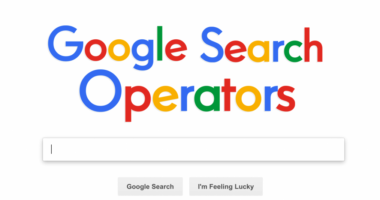WordPress is the most popular blogging system in the world, powering over half a million blogs. It is also a platform that is constantly being improved. In its latest release, found in the WordPress version 5.0.2, is a feature called Gutenberg. This is an overhaul of WordPress’ core editor to allow for different types of content to be created.
I’ve been using WordPress since the beginning–I started writing my blog back in 2005 and have been one of the only bloggers to support WordPress ever since. I’ve built my site the “old-fashioned” way, through autoblogging. So, I’ve been a content producer first and a reader second, and that hasn’t changed. I try to let content speak for itself. Two years ago, I had some time to kill and was curious to see what Gutenberg was all about. I read about the new features and with a bit of research and experimentation, I set out to convert an old post into the new format. Of course, nothing works exactly the way it’s explained in a blog post, but as wordpress.
Gutenberg is one of the most powerful WordPress plugins, and though it hasn’t made the headlines recently, it’s silently putting to work under the hood to make WordPress better for everyone. The latest version, 11.2, has been released and it brings a host of improvements, including a faster image handling, more responsive popups, and improved reliability.. Read more about wp rocket and let us know what you think.
The latest version of Gutenberg, version 11.2, has been released by WordPress. This is an incremental update rather than a big one. Nonetheless, it includes a little speed boost for the editor, as well as a slew of bug fixes and new features, making version 11.2 a noteworthy update.
WordPress Editor Gutenberg
Gutenberg is a WordPress editing experience that is officially sanctioned. It’s a new method to build webpages that use a visual drag-and-drop editing interface.
Gutenberg’s aim is to make it simpler for all publishers to create websites.
The benefit of utilizing Gutenberg rather than a third-party website builder plugin is that the code is directly integrated in the WordPress core. According to several publishers, this may result in a quicker website.
Advertisement
Continue reading below for more information.
Gutenberg used the “block” design paradigm, which is similar to that of building blocks.
Paragraphs, headers, columns, quotations, and other elements are all represented as blocks. Each of the blocks may be modified to the publisher’s requirements using a simple interface, allowing even non-programmers to change the appearance of a website.
The following is how WordPress explains Gutenberg’s purpose:
“Blocks allow you to quickly insert, rearrange, and design multimedia material while requiring very little technological expertise. You may use a block instead of custom code to concentrate on your content.
You may create your own unique articles and pages without needing to be a developer.”
Advertisement
Continue reading below for more information.
Each part of a site, from the search box to the widget area, is built using blocks, or building blocks, to make it simple.
A Block Library contains all of the blocks that may be used to create a web page.
Gutenberg 11.2 has been updated.
The search block has been updated, which is one of the modifications.
The search block houses the search box, which enables website users to do searches.
The Gutenberg search block has been upgraded to provide additional design customization possibilities.
The search button, in particular, now offers additional color choices for both the search button and the search box border.
These are significant advancements that are not just incremental.
More Design Options for Pullquotes
Gutenberg 11.2 adds additional color and border choices to the pullquote box, similar to the search box change.
Advertisement
Continue reading below for more information.
A pullquote is a design element that consists of a quote, often in a bigger font, that is used to highlight significant information.
This is a design element that has been carried over from print.
WordPress claims that:
“The color choices for the pullquote block have also been increased. Setting background, text, and link colors now has more distinct options. Border support has been improved, allowing users to choose from a variety of border styles, colors, and widths.”
Gutenberg’s Pullquote User Interface has been updated (UI)
Improvements to Be Made
Numerous bug fixes are included in Gutenberg 11.2’s release. Here are a few examples of problem fixes:
Advertisement
Continue reading below for more information.
- allowing writers to choose pictures from other authors’ uploads
- Fixing the code to prevent the layout from shifting
- In the Widget Editor, we fixed theme and plugin incompatibility issues.
- An obsolete reference to Instagram was removed from an embed bloc.
- Code quality has been improved.
Enhancement of Performance
As previously said, this is a minor upgrade, and the speed increase for site visitors is similarly minor.
The loading time for Gutenberg 11.1 is 8.54 seconds, compared to 8.48 seconds for Gutenberg 11.2
The keypress event metric, which measures how long it takes for a keypress to register, has also improved.
Gutenberg 11.1 earned a score of 38.17ms, whereas Gutenberg 11.2 got a score of 37.89ms.
Advertisement
Continue reading below for more information.
Those are minor improvements, but they are improvements nevertheless.
Is it Time to Upgrade to Gutenberg 11.2?
Before upgrading to the latest version, publishers that are currently utilizing the Gutenberg editor should make a backup of their website.
Although the odds of an incompatibility problem from an upgrade are slim, it’s always a good idea to back up a website before making a change in case any of the changes are incompatible with existing themes and plugins.
Publishers who aren’t yet acquainted with Gutenberg may choose to export a version of their site to a desktop or online staging area to get a feel for the editing experience.
Advertisement
Continue reading below for more information.
Citations
Gutenberg 11.2 is now live on WordPress.com. What’s new in version 11.2.0 of Gutenberg?
Color support for the search button has been added to the Search Block.
Add border color support to the search block
Drag and Drop Editor Performance To prevent impacting scrolling speed, utilize the passive listener option for utilizing popover scroll.
To prevent re-painting and re-layout, drag objects using the transform attribute.
Add block support to pullquote
Widgets Editor: Fix plugin/theme incompatibility, conditionally call onChangeSectionExpanded
WP Theme JSON Resolver: Fix broken loop in I18n
WordPress, the popular publishing and content management system, has a new editor. Called Gutenberg, it’s a type of editor that lets users create content without the need for an entire WordPress site. It’s a new option that’s available on all WordPress themes and can be switched on/off depending on the user’s preference. Gutenberg also integrates with social media, including Facebook, Twitter, LinkedIn, Google+, and YouTube, so users can have content automatically shared on their preferred platform.. Read more about wordpress leave site warning and let us know what you think.



